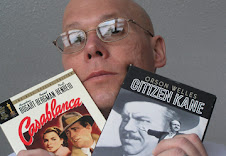

20th Century Fox
RICHARD WIDMARK and Gene Tierney in "Night and the City."
20th Century Fox
DANA ANDREWS and Alice Faye in "Fallen Angel" at right.
Lighten your day with a little film noir
Every once in awhile, you just need a little film noir in your life.
Two that really grabbed my attention are “Night and the City” starring Richard Widmark as a grifter in London and “Fallen Angel,” featuring Dana Andrews who drifts into a small California town to fall for one woman and marry another.
Film noir was popular in the 1940s and early 50s. It is a technique that uses dark and light to create a mood.
It often involves men in fedoras and love-struck couples blowing cigarette smoke in each other’s faces.
Humphrey Bogart was in a lot of film noir.
Film noir has been revived at times with films like “Chinatown” in 1974 and “Body Heat” in 1981.
“Night and the City” was remade in 1992, but this is the original from 1950. Richard Widmark plays Harry Fabian, the king of the angles. He’s the kind of guy who works so hard at making a fast buck, it would probably be easier for him to find a regular job.
It starts with him running across a London street to the apartment of a girlfriend, Mary Bristol, played by the luscious Gene Tierney, who gets precious little film time.
Mary isn’t right there so Harry plunges into her purse, looking for money to pay off a debt.
She catches him and for the upteenth time he tells her about his latest business venture. He only needs $300.
But he quickly switches business ventures. Harry wants to literally wrestle away London’s wrestling interests from a mobster. To do this, he plans to use a newfound friendship with past famed wrestler Gregorius, played by Stanislaus Zbyszko.
Widmark is absolutely phenomenal in this role of the hyper huckster.
There is a shocking, hateful wrestling sequence between Gregorius and rival wrestler The Strangler, played by habitual goon Mike Mazurki.
This is a relentlessly exciting picture, directed by Jules Dassin. My only question is, if it takes place in London, why does no one have a British accent?
If you want to find out why Otto Preminger was such a great actor, check out “Fallen Angel,” his second film in a row with Dana Andrews. The previous film was the classic “Laura.”
Forget the critics. This movie is almost as good.
Andrews plays Eric Stanton, a no-good transient who ends up at a diner in a small town after he is forced off a bus because he didn’t have money to go any further.
There he meets a waitress, June Mills, played by Alice Faye. Everyone is in love with June, including the restaurant owner, Percy Kilbride, best known as Pa Kettle.
Stanton starts an elaborate plan to woo the less worldly Linda Darnell, who plays Stella. She enjoys the attention. He enjoys her bank account. His plan is to marry her to get her money and return to June.
The cad, he leaves Stella on their wedding night (and Stella’s pretty good looking) to hang around the restaurant with June. But June has a date and as the dawn breaks, Eric comes home to a real surprise.
Preminger uses long, continual shots of people walking through restaurants out onto streets, much like Martin Scorsese did in “Good Fellows” 25 years later. But Preminger didn’t have the equipment in 1945 Scorsese had in 1990. Pretty impressive.
Everybody wears suits all of the time. Everyone smokes. Lights illuminate people’s faces even when there’s no light source around.
It’s the mood. It’s the dialog. It’s the apparel. It’s the era.
Film noir has always been cool. Here’s two films that show you why.
Fallen Angel
• Runtime 98 minutes
• Distributed by Twentieth Century-Fox Corp.
• Not rated
• 3 1/2 stars out of 4
Night and the City
• Runtime 101 minutes
• Distributed by Twentieth Century-Fox Corp.
• Not rated
• 3 1/2 stars out of 4
This appeared in the Star Beacon WEEKENDER Feb. 29, 2008.





